#1 Premium pulp quality
One day. That is how long it takes on average for a chip to travel through the process at Metsä Fibre’s Joutseno pulp mill before it is converted into pure white pulp fibre.
The pulp process is simple: chips are cooked in chemicals in a digester, and the resulting pulp is washed and bleached, dried, cut into sheets and baled.
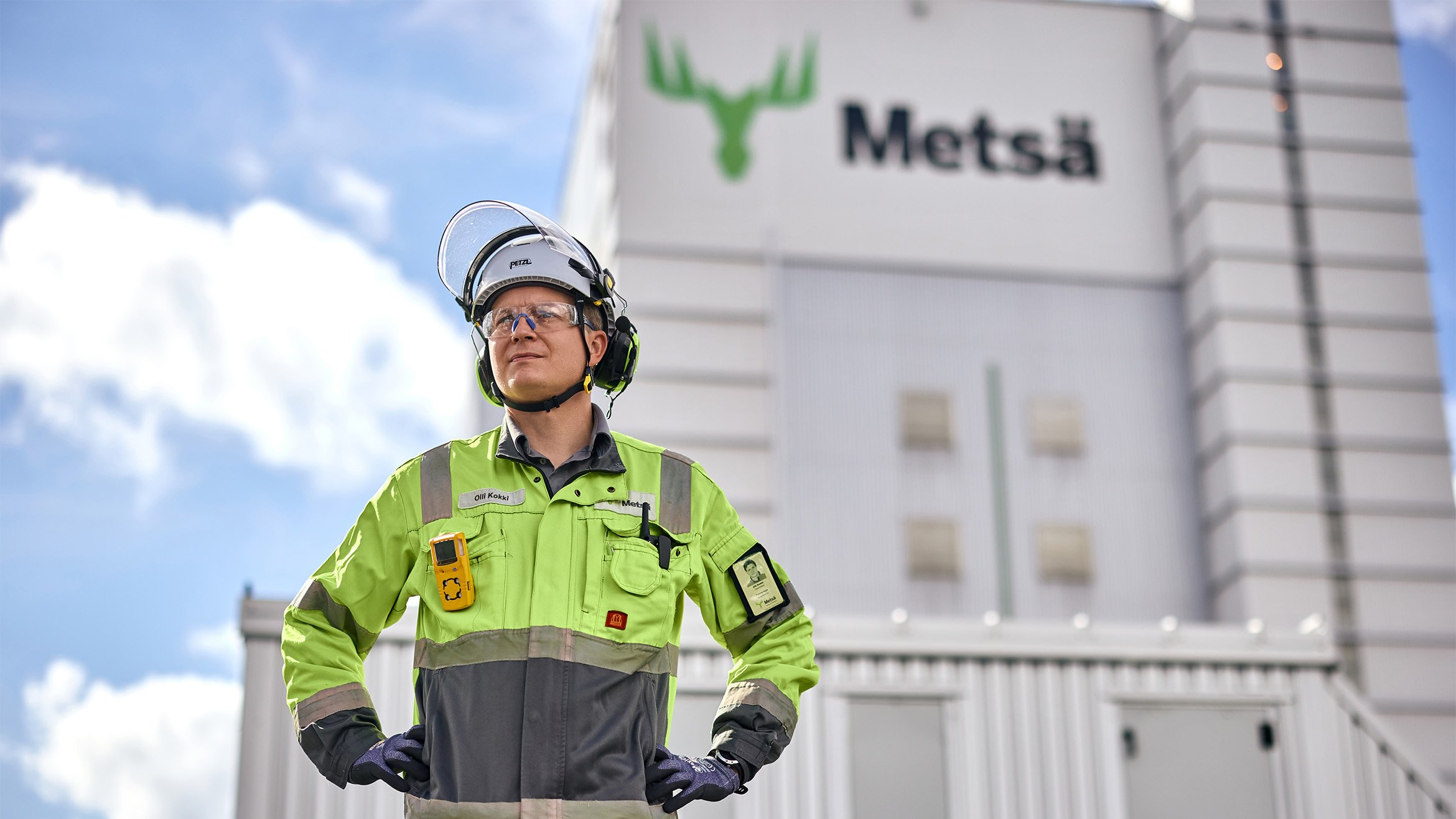
“Premium pulp ensures the quality of our customers’ products, and that is why it’s extremely important to us,” says Olli Kokki, Mill Manager at Joutseno pulp mill.
Pulp quality is mainly about purity and consistent quality. The length of the fibre and the brightness, viscosity and pH of the pulp must remain the same from batch to batch.
“Pulp cooking is a form of chemistry: the conditions and their management are crucial to the end result.”
Factors affecting the result, including pulp flow, cooking temperature and the concentration of the cooking chemical’s residual alkali, are measured dozens of times during the process. Thanks to continuous measurements, the quality data required for optimisation is collected all the time.
Key measurements are compiled into a quality index called Metris FOX (fibre online index). The index monitors nearly 20 parameters and sets off an alert if the guideline values are exceeded. For Metsä Fibre’s customers, FOX provides valuable information about how the pulp batch in question suits their purpose.
The fresh fibre pulp Metsä Fibre produces is very suitable for food packaging, for example. It is pure, does not introduce into the food anything that is harmful to human health and does not alter the foods flavour, odour or consistency.
“Product safety criteria are very specific, and there is no compromising on the requirements. Our operations are based on the idea that all the pulp we produce is suitable for use with foodstuffs.”
#2 Reliable deliveries
A cargo ship fully loaded with pulp departs from the Port of Rauma on its way to Asia, where it is scheduled to arrive six weeks later.
The sea is calm today.
In contrast, the markets have been in a whirlwind for the last few years. The choppy waters caused by the Covid-19 pandemic had hardly calmed down when Russia’s war of aggression against Ukraine made new waves.
Metsä Fibre has piloted steadily through the storm, demonstrating to its customers that it remains a trusted partner that can ensure reliable deliveries – even during crises.
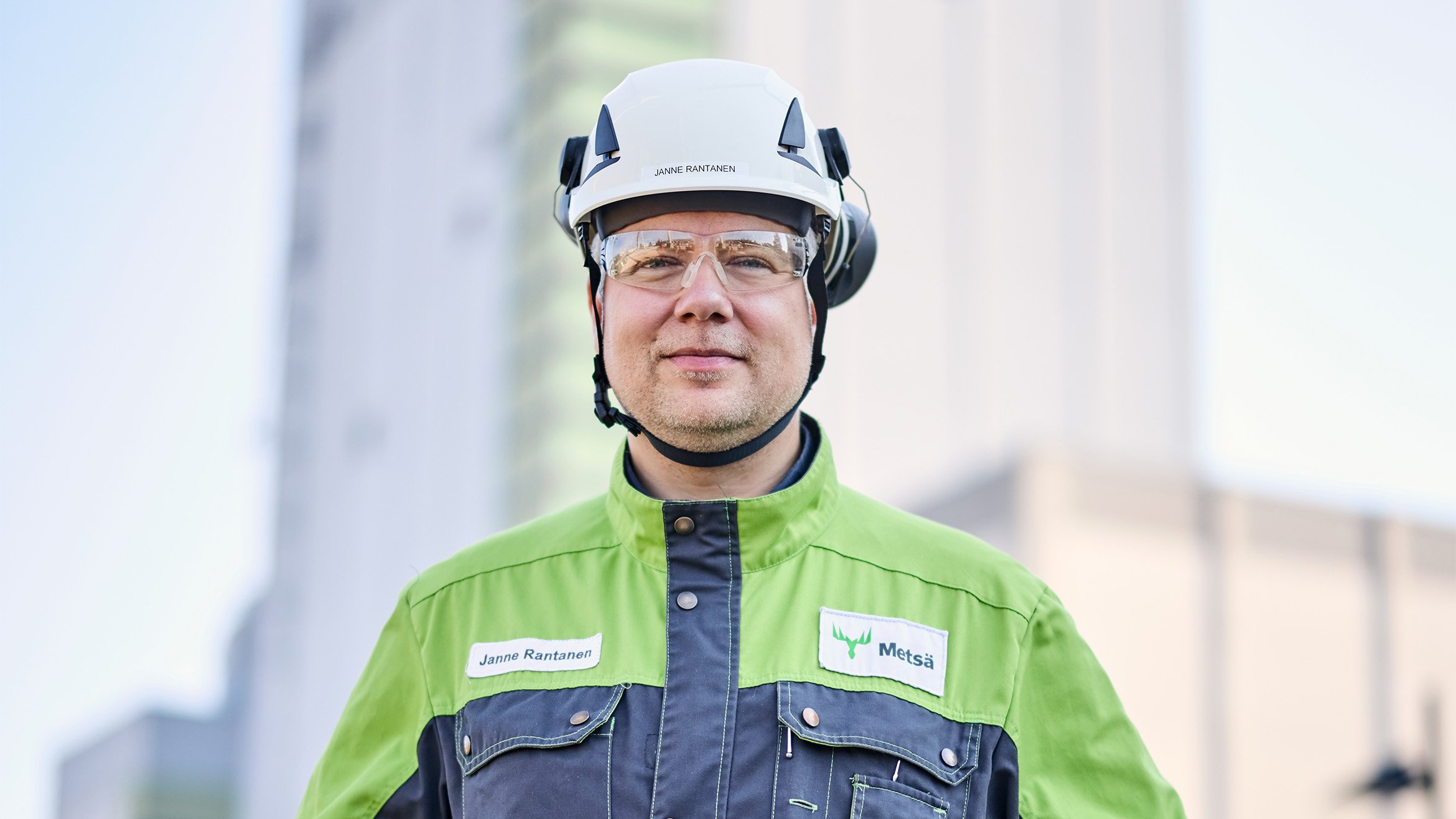
“Ultimately, recent world events had only a minor impact on our operations,” says Janne Rantanen, Mill Manager at Metsä Fibre’s Rauma pulp mill.
Metsä Group discontinued wood imports from Russia in March 2022 and replaced Russian wood with domestic raw material in all its production units. The availability of domestic wood raw material is secured by the parent company Metsäliitto Cooperative, which has more than 90,000 owner-members who own more than half of Finnish private forests.
“Our owner-members’ forests offer a stable foundation for our operations, enabling us to run our mills normally.”
Within the mill gates, the reliability of deliveries is closely linked to the mill’s uptime.
In the long term, the development of mill processes is guided by the life-cycle plan. The safety and efficiency of operations are ensured through annual maintenance shutdowns, when necessary service, cleaning and maintenance work is carried out.
As an example of repairs improving the mill’s uptime, Rantanen mentions the 2022 renewal of the recovery boiler curtain piping.
“I’m very satisfied with this investment because it crucially improved the reliability of our operations.”
On a weekly basis, operational uptime relies on daily actions such as high-quality preventive maintenance activities.
“Our committed and professional employees play a key role in this work. Every task is important,” says Rantanen.
Initiatives and innovation that improve the mill’s uptime are important to Metsä Fibre, and employees are encouraged to focus on them. A while ago, an initiative from the debarking department team led to the increased use of white water, which in turn helped save water.
#3 Modern bioproduct mills
Kemi mill area in Pajusaari is home to the town’s new landmark: the 105-metre stack of Metsä Fibre’s Kemi bioproduct mill.
The mill started up in September 2023 and has an annual capacity of 1.5 million tonnes of bleached softwood and hardwood pulp. In addition, it produces other bioproducts such as crude tall oil (CTO) and crude sulphate turpentine (CST), and enough bio-based electricity to exceed the mill’s own needs 2.5 times.
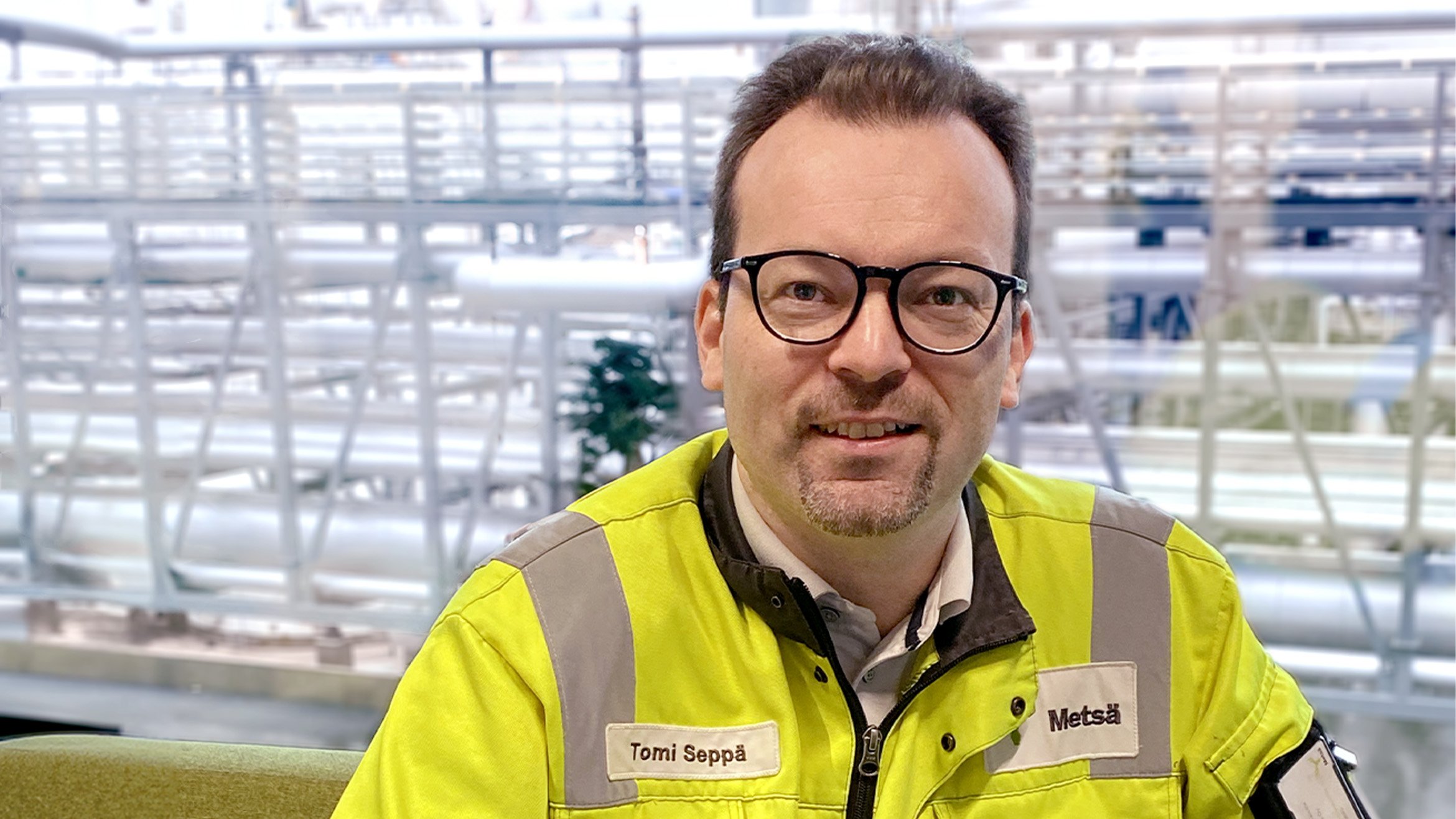
“Kemi bioproduct mill is further strengthening Metsä Fibre’s position as the global market leader in softwood market pulp. We are producing premium pulp safely and cost-effectively to meet the increasing demand, using the best available techniques and ensuring high environmental performance,” says Tomi Seppä, Mill Manager at Kemi bioproduct mill.
The best available techniques (BAT) used in the construction of Kemi bioproduct mill are referenced in the EU’s Industrial Emissions Directive and have allowed the mill’s environmental impacts to be reduced to the greatest degree possible.
The mill’s air emissions are controlled with effective electrostatic filters. Wastewater is treated at a new sevenstage wastewater treatment plant that employs tertiary treatment to finalise the process.
“Technology has taken a big leap forward, especially in wastewater treatment. Our load on waterways will decrease despite our increased production.”
In many respects, the techniques used in Kemi qualify as BAT+, meaning the techniques are more advanced than BAT. Seppä mentions the bioproduct mill’s wood processing as an example of BAT+. Its autonomous cranes employing artificial intelligence have replaced loaders running on fossil fuels.
When Kemi bioproduct mill was started up, the old pulp mill on the same site was ramped down. The new mill is more digital, automated and intelligent than its predecessor. As a work environment, it is safer, more modern and more inspiring.
“I’m convinced that BAT and BAT+ will increase our operators’ wellbeing. Working at this modern mill also provides them with a great opportunity to develop their professional competence.”
#4 The bioproduct concept
The 145-metre lime kiln spins leisurely around its axle at Metsä Fibre’s Äänekoski bioproduct mill. Part of the mill’s recovery line, the lime kiln converts calcium carbonate back into a usable form, calcium oxide.
The reaction calls for a high temperature, which has traditionally been achieved using fossil fuels. Just as the mills in Joutseno and Kemi, Äänekoski has replaced fossil fuel with product gas made from bark.
Product gas is an example of operations that follow Metsä Fibre’s bioproduct concept. The goal is to utilise all the main and side streams of production as pulp and other bioproducts, replacing fossil materials and fuels.
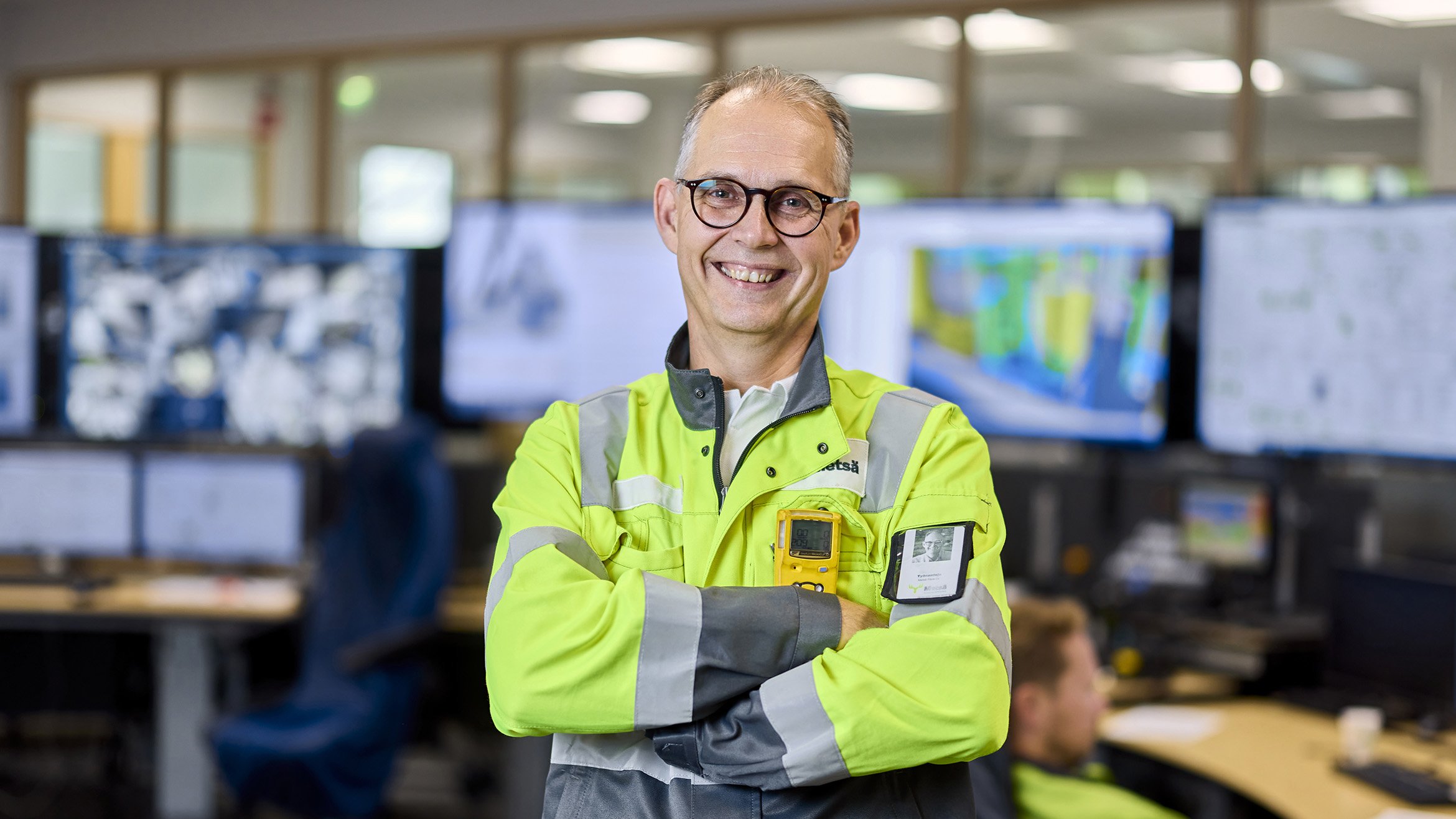
“We produce biogas and biopellets from wastewater sludge. Ash and other solid side streams can be used to produce fertilisers and soil improvement material,” says Ari-Pekka Vanamo, Mill Manager of Äänekoski bioproduct mill.
New initiatives concerning pulp process side streams include the use of green liquor dregs for soil improvement and biomethanol that can be used as a vehicle fuel, which Metsä’s partner Veolia will begin to refine in Äänekoski.
The utilisation of side streams in line with the bioproduct concept makes also sense from the circular economy perspective. It is a growing business with a promising outlook.
“At Äänekoski, we aim for other bioproducts to account for more than 20 per cent of our production.”
In March 2023, Metsä Group and Fortum announced a joint study into the recovery of the wood-based carbon dioxide generated as a side stream in the forest industry. The technology’s development would open the door to new bio-business worth a billion euros.
Just two months later, in May 2023, Metsä Fibre and Andritz announced that they are planning a demo plant for modified lignin as part of the Äänekoski bioproduct mill. The lignin product made in the demo plant could be used in the construction industry.
#5 An industrial ecosystem
The shores of Lake Kuhnamo offer a view of the entire Äänekoski mill area. This is where the forest industry began to emerge in the late 19th century. First there was a sawmill, followed by a paperboard mill, and the first pulp mill was constructed a few decades later.
Fast forward to today: At the centre of the site, Metsä Fibre’s bioproduct mill towers over the rest. It is surrounded by Metsä Wood’s veneer mill, Nouryon’s chemical mill, Metsä Board’s paperboard mill, Metsä Group and Valmet’s joint 3D fibre product demo plant, Veolia’s biomethanol plant, Specialty Minerals Nordic’s industrial chemical plant and Metsä Group’s demo plant for Kuura® textile fibre.
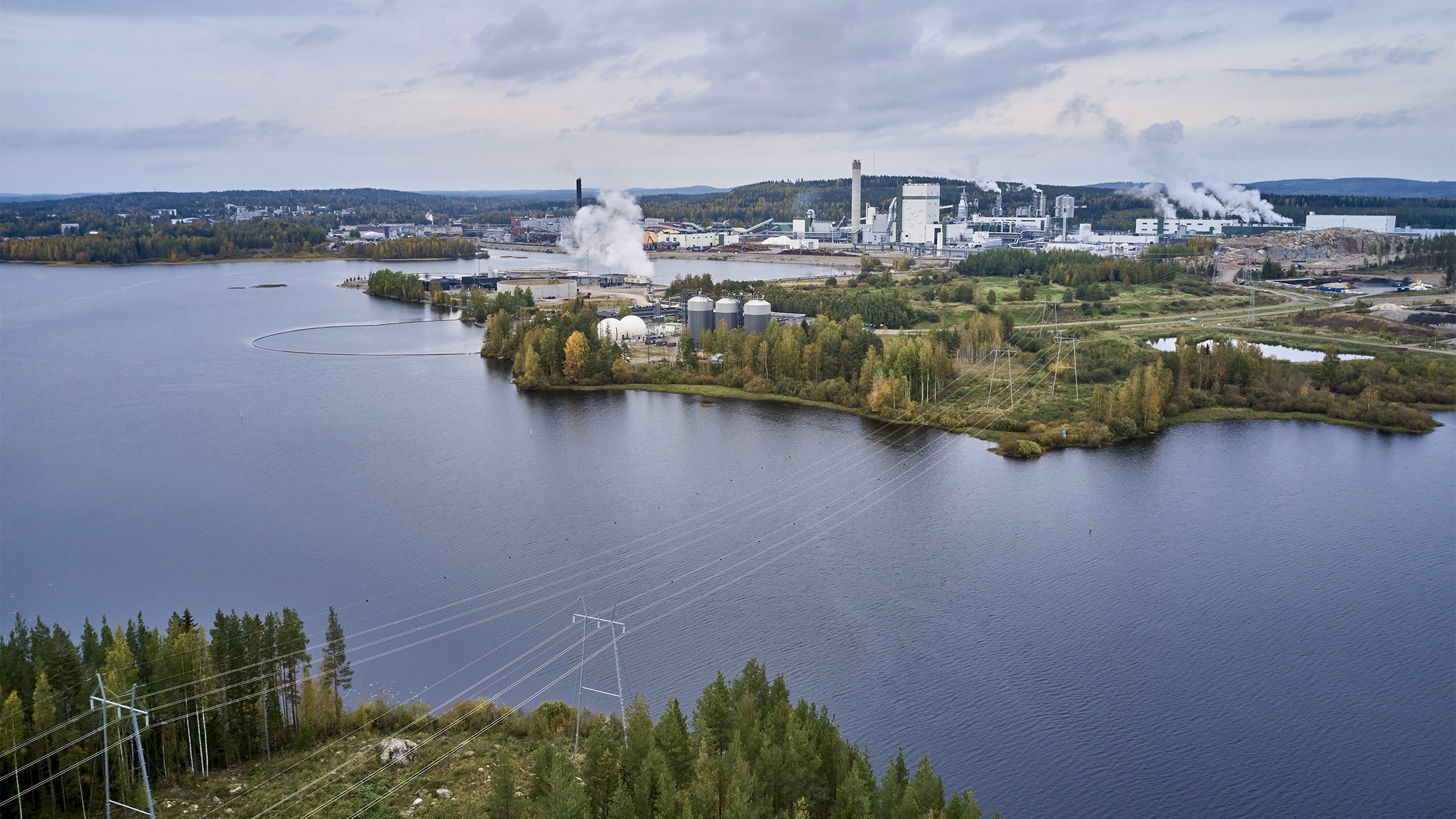
The operators at the integrated mill site form an industrial ecosystem – a network of operators that use each other’s end products and side streams in their own processes, benefiting one another.
Like any other ecosystem, an industrial ecosystem grows and develops. Metsä Group has already announced that it will build a new Kerto® LVL mill in Äänekoski. Coming online in 2026, the mill will be closely integrated with Äänekoski bioproduct mill in terms of energy production, water treatment and production side streams.
Could the builders of those first mills ever have dreamt how far wood processing would develop here?
The modern bioproduct mill and industrial ecosystem have attracted a great deal of interest. Since Äänekoski bioproduct mill started up in 2017 it has had more than 22,000 visitors.
Metsä Group’s banners fly in front of the Pro Nemus visitor centre, welcoming pulp customers from China. During their visit, they tour the bioproduct mill and learn more about Metsä Group’s business.
Three hours later, both the customers and the hosts seem satisfied. The bioproduct mill’s environmental performance has made an impression on the guests. They say that climate and sustainability are also hot topics in China.
“Our customers have taken big steps in China to reduce water consumption and the load on the waterways at their mills,” says Vanamo.
The future builds on the choices we make today. In its sustainability targets, Metsä Fibre states that its mills will be fossil fuel free and zero waste by 2030. The market leader continues to evolve.
This article was originally published in Fibre Magazine issue 2024.
